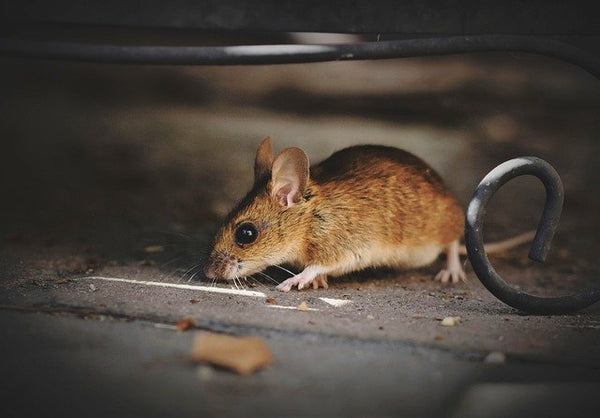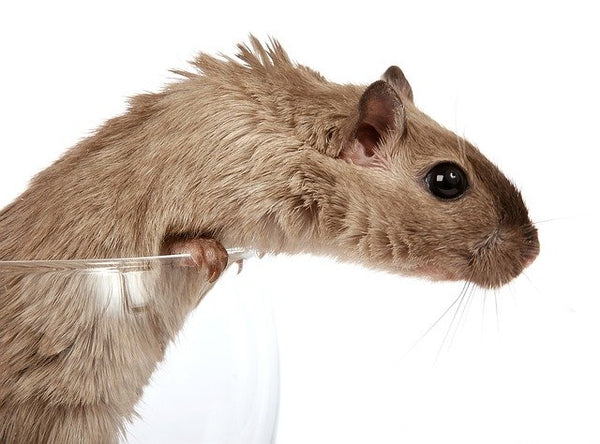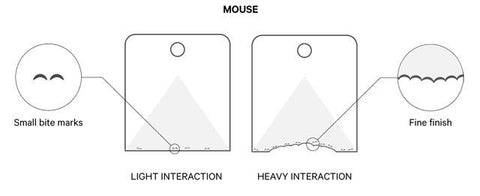
Homeowners often find it unsettling to find that rats and mice are taking up residence in their garages, crawl spaces, or walls. Beyond the ‘ick-factor’ that this triggers for many people, rats and mice can cause damage to property, and they can pose health risks too.
It’s not always easy to tell whether it’s a rat or mouse that is responsible for the squeaking and scratching in your home or business. Before setting out a trap, it’s important to know what you’re dealing with, to understand how best to approach the situation .
At Goodnature we understand rats and mice can appear similar to the untrained eye, but there are actually many different distinguishing traits for both. Each animal has its own behavioral and biological makeup, and while trapping methods applied to rats may work on mice, it may not be as successful as on a rat (and vice versa).
The difference between a rat and a mouse
Although rats and house mice (Mus musculus) are both common rodents, the two have several differences that will help you know which one you are dealing with.
Physical appearance
The house mouse (Mus musculus), Norwegian or brown rat (Rattus norvegicus) and the roof or Black rat (Rattus rattus) species are the most common rat and mouse families in the world. The coloration of the rodents can be similar, with black rats looking noticeably darker than house mice and brown rats. While this can be an instant notifier there are other differences in their features that can help distinguish them even quicker.
A mouse measures 1-4 inches in length, including its tail with weight ranging between 0.4 and 1 ounces. They may be grey, brown, or even white in color, and a triangular snout that features long whiskers. A mouse also has a floppy, large ear, and a thin, hairy, long tail. These rodents exist in various climates and environments. They can survive up to 6 years, though the majority live within a year. In general, a mouse is timid, social, nocturnal, and territorial. They are much easier to catch than their rodent cousins.
On the other hand, a rat is usually medium-sized, growing as large as 14-15 inches and weighs considerably more than a mouse. Adult rats weigh up to 11 ounces. They exist in different colors, including brown, gray, white, and black, and are usually dirty causing them to leave marks on surfaces. A rat also has a blunt snout with scaly but hairless tails. Just like a mouse, this rodent is also found all over the world in different environments. They are similarly nocturnal.

Their habits and breeding patterns
The two rodents look for different factors when they’re looking for a new home. A mouse is likely to create its home close to a food source. Rats on the other hand are smarter and choose sheltered areas over inconvenience as they don’t like to be exposed to predators or humans.
Mice like the kitchen or beneath the sink or in the walls. They also like being cozy and will hoard on fibrous, soft materials like dry grass, old clothing, or papers to make their nests.
Rats are very industrious and can make nests from a variety of materials. As mentioned before, they can be found in less occupied areas like lofts, attics, wall cavities, and eaves. Rats also live in burrows and in the ground. As such, you are most likely to spot them outdoors, particularly on the sewer systems and throughout building works. You can also see them along fences, in debris, trash and under plants. The burrowing can cause plenty of damages to homes if not detected early enough.
Mice are omnivores but contrary to popular belief, cheese is not their favorite food! They prefer grains, seeds, dry pet foods, and fruits. Essentially, the mouse will eat whatever they can get their teeth on and foods that are common to the everyday kitchen. While they are opportunistic feeders, they aren’t as bold as rats.
A rat can feed on almost anything, but they love proteins and eating meat, fresh grain, and any waste left behind by humans. They also consume between ½ and one ounce of fluid every single day. If they don’t get this amount of fluid on the food they eat, they will probably look for water.
When it comes to breeding, a female mouse can give birth to up to 10 litters of 5-6 babies. This is almost 5 dozen baby mice every year. Assuming that the offspring begin to reproduce within 6 weeks, you can imagine the damage a mouse infestation could cause.
In a year, a rat can reproduce up to 6 litters of 12 rat pups. These offspring may begin to breed when they are only 3 months old, mostly during the Spring. Most rats live between 12 and 18 months and can have up to 8 litters each year!
Comparing rat and mouse movements
With the support of its tail, a mouse can stand up on its hind legs. They’ll stand to fight, eat, or figure out where it is. Mice are also excellent swimmers, jumpers, and climbers.
An interesting fact about mice is that they move between dusk and dawn because of their nocturnal nature. Mice do not like bright light but can move during the day when its nest is disturbed or if they’re in search of food. A mouse can easily slips through holes; they can sneak through gaps as small as ¼ inch.
A rat needs a little more space, but can still get into your home through a hole that’s just ½ an inch. Just like a mouse, rats are good swimmers, which enables them to live in sewers and can get into the house via a toilet or drain. A rat only climbs when in search of shelter, water, or food. Rats are real creatures of habit. They’ll follow a regular path and routine every day. When it discovers a new object on its path, the rat will try its best to avoid it. This is because rats are “neophobic” - which means they’re known to shy away from new foods, places, etc… This is most likely an evolutionary trait. Their suspicion can help keep them safe. That’s why mice are much easier to trap than rats.

Droppings
Now we’re really getting into animal tracking expertise! The droppings of the two rodents differ in terms of shape and size. The mound of droppings of a mouse is about a ¼ with pointy ends. The droppings are usually scattered randomly and are black in color. They are always dropped near nesting areas.
The droppings of a rat are always long and are thinner than those of a mouse. The droppings are ¾ inches long, less plentiful, and have a brick-like shape. Try dropping that into dinner party conversation!
The Centers for Disease Control and Prevention (CDC) always advises that rodent droppings should be handled with care because they contain pathogens that could spread and harm humans. Ensure you dispose and handle them with care.
The similarities between the two rodents
Rats and mice also have some similarities. Both of them are mammals and breed very quickly. They can easily adapt to different environments. Both also like seeking out the warmth that buildings offer, mostly during the winter and fall months. Because of their large litters, a rat and a mouse often create nests where they would eventually have their babies. It is, therefore, common to locate the rodents in attics and house basements.
Trapping rats or mice with one device
Whether you have rats or mice in your business or home, it is important to develop a strategy to dispatch them and prevent them coming back. Using an automatic, quick kill, and toxin-free option like the Goodnature A24 rat & mouse trap can provide you constant control of your rodent problem without the use of nasty toxins.
The A24 is a unique trap that works for both rats and mice so you don’t have to spend your time figuring out who your rodent pests really are. Just set up your A24 using the Quick Start Guide and you’re on your way to ridding your home or business of rodent pests, whether they are rats or mice.
Using Goodnature Lure Taster Cards
Another thing rats and mice have in common is a keen sense of smell and an affection for our long-lasting lure. Our Lure Taster Cards are another way to determine if you have rodents.
Lure Tasters Cards contain our non-toxic and long-lasting lure. They’re designed to introduce the lure to your rodent pests and attract them to your A24 trap. Another benefit of the cards is that they can show you where best to put your trap.
Lure Tasters are included in every Home Trapping Kit and are super easy to use. Simply fold them over, to squeeze a little of the lure out and pin them to areas of suspected rodent activity. They’re water resistant so can be used inside and out.
If you look closely, you might also be able to tell whether it’s rats or mice that have been nibbling on the cards. Mice interaction is characterized by small bite marks with a fine and smooth finish, whereas if it was a rat it’s typical to see large bite marks and a rougher more jagged finish.


Lure Taster Cards can help you identify your rodent pests and influence your strategy to remove them. If your Lure Taster Cards don't have any bite marks or scratches after a few days this could mean the rodents aren't in that specific location or that they don't feel safe to feed in that area.
If you’re experiencing this, we recommend waiting a few days to monitor activity at your trapping location before moving your cards.
Check out the video below for more information on how our Lure Taster Cards work:
